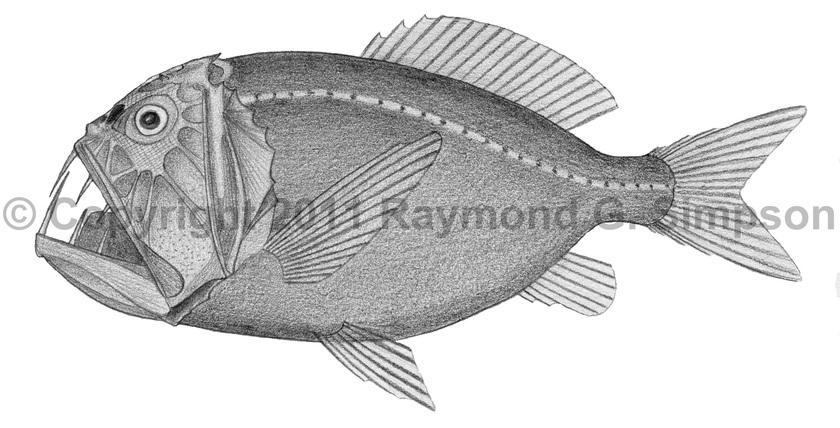
Common Name
Fangtooth
Year Described
Valenciennes, 1833
Identification
Dorsal Fin: 16-20
Anal Fin: 7-9
Pelvic Fin: 7
Pectoral Fin: 13-16
Vertebrae: 28
Body stout, compressed and deep with a huge head. Eyes small in adults but proportionally larger in juveniles. Mouth large and oblique, with very large fang-like teeth on dentary and premaxilla (juveniles with villiform teeth). Vomer and palatine without teeth. Conspicuous ridges on head around sensory canals. Dorsal fin single, without spines. Caudal fin emarginate. Scales small and raised. Lateral line an open canal. No ventral scutes. Juveniles with very long parietal and preopercular spines (up to 31% SL in 19mm specimens and up to 9% SL in 57mm specimens). Spines disappear in adults.
Color
Body entirely dark brown to black.
Size
Maximum size to 160mm SL.
Habitat
Mesopelagic to bathypelagic from 75-5,000m. An active predator.
Range
Ranges widely from Canada to Argentina.
References
Moore, J.A. 2002. Anoplogastridae. In: FAO Species Identification Guide to Fishes of the Western Atlantic. (ed. Carpenter K), pp. 1178-1179. UN FAO Publishers, Rome.
Other Notes
Adults of A. brachycera have not been described/diagnosed, and many A. cornuta specimens in collections may be the former species.